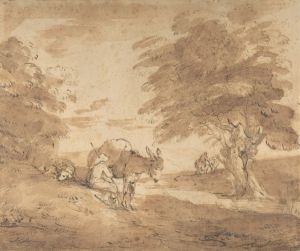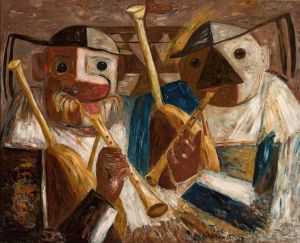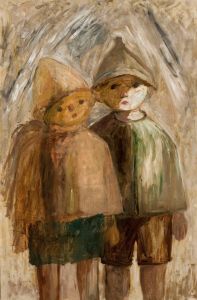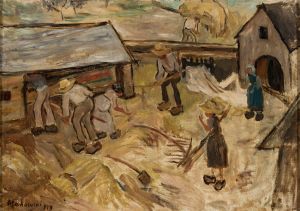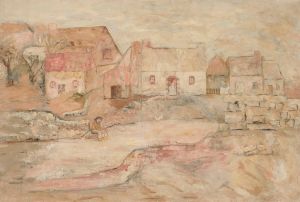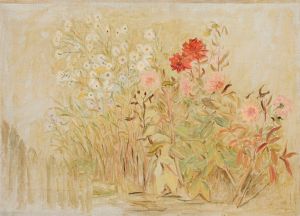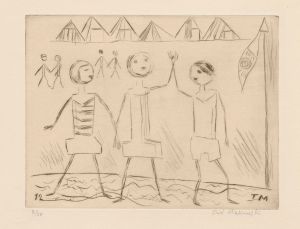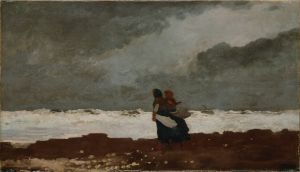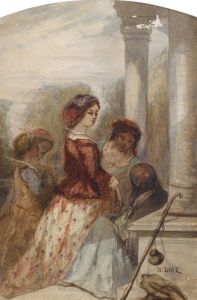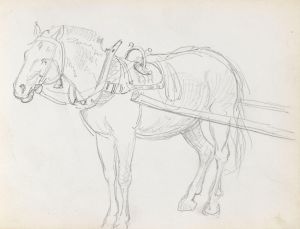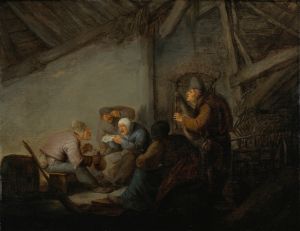
Conversation with a hunter
A hand-painted replica of Tadeusz Makowski’s masterpiece Conversation with a hunter, meticulously crafted by professional artists to capture the true essence of the original. Each piece is created with museum-quality canvas and rare mineral pigments, carefully painted by experienced artists with delicate brushstrokes and rich, layered colors to perfectly recreate the texture of the original artwork. Unlike machine-printed reproductions, this hand-painted version brings the painting to life, infused with the artist’s emotions and skill in every stroke. Whether for personal collection or home decoration, it instantly elevates the artistic atmosphere of any space.
Tadeusz Makowski (1882–1932) was a Polish painter known for his distinctive style that combined elements of modernism with folk art influences. His works often depicted scenes of everyday life, children, and rural settings, rendered with a sense of simplicity and emotional depth. One of his notable paintings, Conversation with a Hunter, reflects his characteristic approach to art, blending a childlike naivety with a deeper, symbolic undertone.
Conversation with a Hunter is an oil painting created in 1928. The artwork portrays a whimsical and somewhat surreal interaction between a hunter and a group of figures, possibly children or anthropomorphic characters. The composition is marked by Makowski’s signature use of geometric forms, muted colors, and a flattened perspective, which give the painting a dreamlike quality. The figures in the painting are stylized, with rounded, simplified shapes that evoke a sense of innocence and playfulness, a recurring theme in Makowski’s oeuvre.
Makowski’s artistic style was heavily influenced by his time in Paris, where he moved in 1908 and became associated with the École de Paris, a group of international artists working in the French capital. While in Paris, he was exposed to various modernist movements, including Cubism, which had a lasting impact on his work. However, Makowski developed a unique aesthetic that also drew inspiration from Polish folk art and medieval iconography, resulting in a fusion of modernist techniques and traditional motifs.
In Conversation with a Hunter, the hunter figure is depicted in a stylized manner, wearing a hat and holding a rifle, while the surrounding figures appear to engage with him in a quiet, contemplative manner. The setting is minimalistic, with a focus on the interaction between the characters rather than the environment. This simplicity allows viewers to interpret the scene in multiple ways, adding a layer of mystery to the painting.
Makowski’s works, including Conversation with a Hunter, are celebrated for their ability to capture the essence of human experience through a lens of childlike wonder and introspection. Today, his paintings are held in high regard and can be found in various museums and private collections, particularly in Poland and France. His unique contribution to modern art continues to be appreciated for its blend of innovation and tradition.







